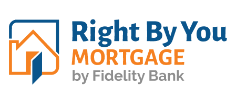You may already know that, in order to get a mortgage, you’ll have to provide your lender with a lot of detailed personal and financial information about yourself. That includes tax returns, bank statements, paystubs and whatever other documents your lender needs to determine whether you qualify for a loan.
Thanks to the Internet, it’s never been easier to send these documents to your lender. But some ways of sending documents are safer than others—and it’s a good idea to ensure you know how to send your documents securely.
Email Can Be Dangerous
Many folks still believe email is a safe way to send documents and personal information to your lender. However, criminals know that many borrowers send a lot of sensitive personal and financial information to their lenders through email, and it’s relatively easy for them to access a borrower’s personal data through email phishing attempts and other schemes.
Phishing is when a criminal sends out an email that looks almost exactly like an email from your loan officer or closing attorney, but it’s actually fake. These emails usually come with a link to a website along with an urgent request to submit your personal information there—but the website, too, is fake.
That being said, it’s still OK to use email to communicate with your loan officer. Just don’t send documents or other personal details about yourself this way, including your Social Security number or bank account numbers without knowing that it’s secure. If you need to use email to send documents, please reach out to your Loan Officer. They can send you a secure email link that will protect you and your personal documents.
Secure Portals Are Better
Of course, the safest way to provide your lender with financial documents is to hand deliver them to your loan officer in person. However, if that is difficult for you to schedule, another option may be to use the lender’s secure online portal or dashboard, one that requires a log-in, password and two-factor authentication to access.
Your lender should be able to give you clear instructions on how to use their portal and tell you exactly when and how to submit your documents. Once you’ve sent them, there’s nothing wrong with contacting your loan officer to ensure they were received safely.
Like all businesses, lenders face increasing pressure to protect their customers’ private information, especially online. It’s not unreasonable to ask your lender how they plan on protecting your documents, and whether they have a secure portal for you to use to transmit documents safely.
Other Ways to Stay Safe
There are other things you can do to keep your documents away from the wrong hands. If you have a home network, for example, it’s a good idea to make sure it is password protected. In addition, if you need to send documents over a public network, like a coffee shop or library, BE CAUTIOUS. These networks are often unprotected and easy to hack.
During the process, if anyone you don’t know asks you for documents either through email, text message or phone—contact your lender or loan officer to ensure it is safe. This applies if you happen to receive an email from an address you don’t recognize, or a phone call from an unknown number. Your loan officer will tell you if the request is legitimate or not, so don’t be afraid to call and ask.
If you have any questions about how we handle borrower documents at Right By You Mortgage, we’d be delighted to answer them. To speak with one of our loan officers, just call 1-877-552-2242 or reach out to us at inquiries@rightbyyoumortgage.com. We’re always ready to help!









